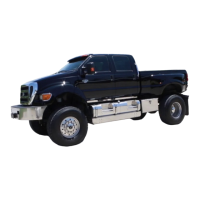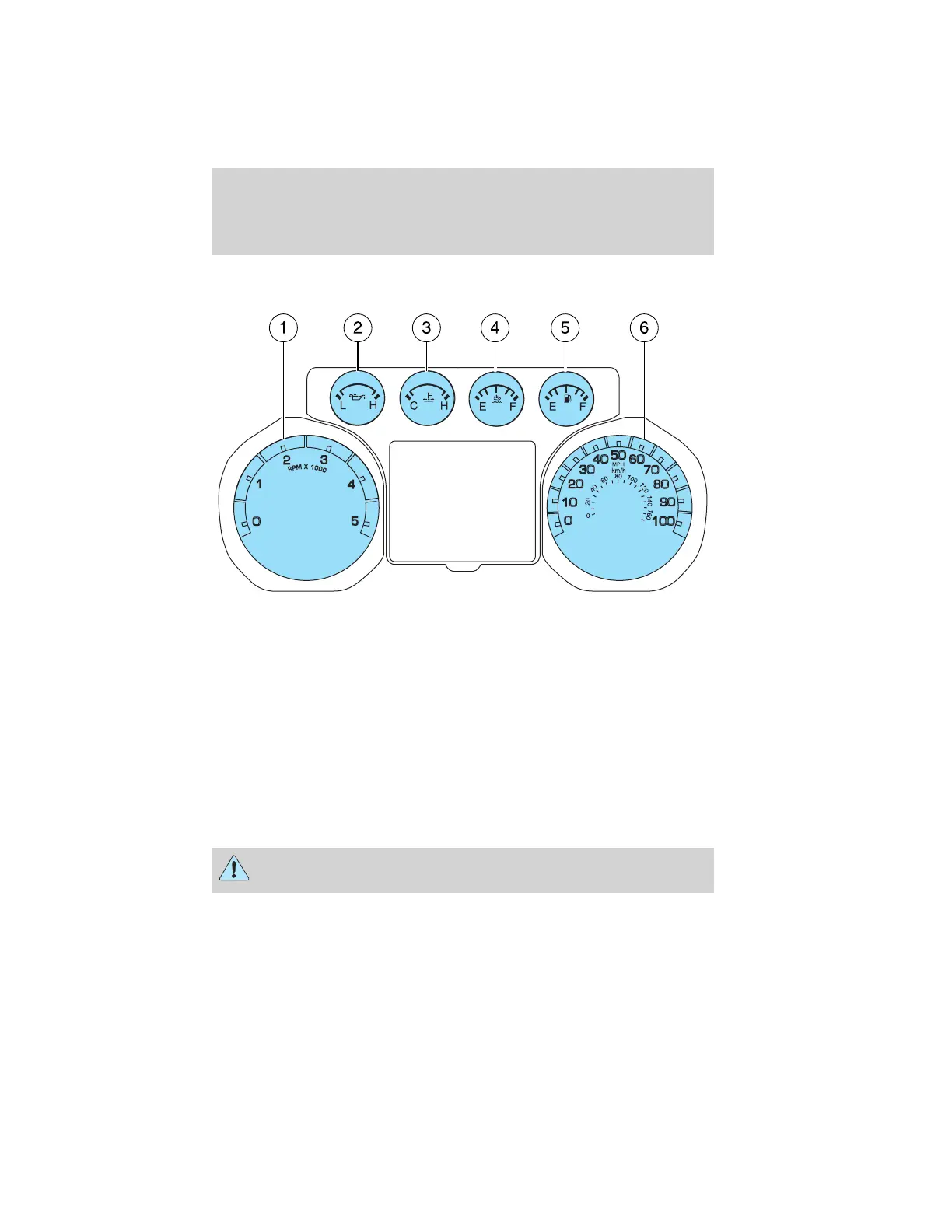
 Loading...
Loading...
Do you have a question about the Ford F-650 2011 and is the answer not in the manual?
| Brand | Ford |
|---|---|
| Model | F-650 2011 |
| Category | Automobile |
| Language | English |
Guide and vehicle warning symbols for safety and environmental protection.
Information on Service Data Recording and Event Data Recording systems.
Glossary of symbols found on the vehicle for easy identification.
Guide to checking fluid levels and components in the engine compartment.
Verifying presence and condition of safety and emergency equipment.
Inspecting front brakes, wheel rims, and lug nuts for condition and security.
Inspecting driveshaft, exhaust, frame, rear lights, and air/electric lines.
Explains vehicle warning lights and their meaning for alerts.
Explains the function of various gauges like tachometer, oil pressure, and coolant temperature.
Details on selectable features like trip meters and fuel estimates in the message center.
Operation and features of the AM/FM stereo system.
Instructions for using the single CD and satellite radio features.
How to connect and use portable music players via the auxiliary input jack.
Explanation of controls for defrost, heated mirrors, and air distribution.
Tips for optimal performance and comfort using the climate control system.
Operation of headlamps, high beams, flash-to-pass, and daytime running lamps.
Adjusting interior light brightness and operating interior lamps.
Step-by-step guide for replacing various exterior light bulbs.
Operation of windshield wipers and washers.
Adjusting steering, operating power windows, and locking window controls.
Adjusting power and manual exterior mirrors for optimal rear visibility.
How the key operates vehicle locks and security features.
Using the power door lock controls to unlock all doors.
How to engage and disengage childproof locks on rear doors.
Adjusting front seats, seatbacks, and head restraints for safety and comfort.
Features of rear seats, safety restraint precautions, and child restraint usage.
Procedures for installing child safety seats with lap/shoulder belts and LATCH systems.
Procedures for starting, operating, and handling cold weather conditions.
Safe procedures for backing up and parking the vehicle.
Detailed information on brake systems, operation, and warnings.
Information on Ford's complimentary roadside assistance program and how to use it.
Operation of hazard flashers and location/function of vehicle fuses.
Procedures for jump-starting and safely towing a disabled vehicle.
Steps for obtaining warranty service and contacting Ford for assistance.
Consumer rights and procedures under California's warranty laws.
Procedures for reporting safety defects to NHTSA (US) and Transport Canada.
Guidelines for washing vehicle exterior, chrome, and paintwork.
Procedures for repairing paint chips using touch-up paint.
Instructions for cleaning instrument panel, interior trim, and fabric/leather seats.
Precautions and guidelines for performing vehicle maintenance and repairs safely.
Maintaining front axle alignment, suspension, and rear axle lubricant levels.
Detailed guidance on brake system inspection, adjustment, and parts.
Importance of owner maintenance and authorized dealer services.
Daily checks for engine, brake, transmission, and steering systems.
Maintenance schedules based on driving conditions: on-highway, city, and severe service.